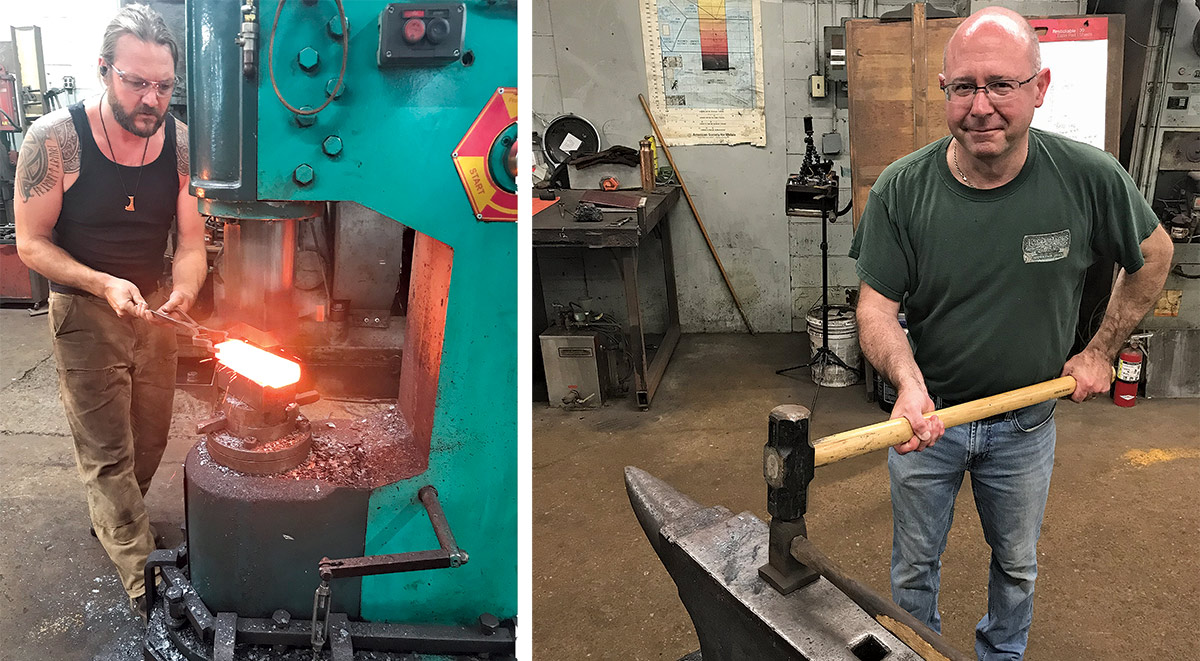Professor apprentices with alum swordsmith to sharpen knowledge


Jamie taught me how to make an Anglo-Saxon sword. Working in his Dragon’s Breath Forge in Wolcott, Conn., we welded seven layers of steel into a billet, which we drew into a rod and twisted, and then re-welded it into another billet, which we hammered to the size and shape of a blade before grinding and polishing it. We then cast molten silver into “lost-wax” molds, inset garnets, twisted wire and carved horn, and then cut, polished and assembled all 29 of these pieces into a hilt.
Much of my work was as “striker,” the less-skilled worker who repeatedly hits the hot metal with a hammer under the critical eye of the swordsmith.
This remarkable experience gave me new insight into the culture in which the poem Beowulf was created. It is one thing to read how many hours of labor are thought to be required to make a sword; it is quite another to spend even a small fraction of those hours in front of a roaring forge in the middle of July, singeing the hair off your knuckles while repeatedly striking orange-hot metal with a 12-pound hammer until your shoulder burns and the sweat blurs your vision; and then starting over when a defect appears in the steel.
Performing this labor made me recognize the enormous quantity of knowledge (transmitted orally, never written down) necessary for smith-craft, and I came to appreciate, in a very visceral way, the immense labor performed by people who are utterly invisible in the literature I study: the anonymous workers who made the swords and helmets and coats of chainmail (and nails, horseshoes and shovels).
Their creations were greatly valued, but because they were not warriors or nobles, their names are forgotten. While laboring at a forge cannot recover them as individuals, perhaps it reanimates just a bit of their identities as workers and artisans.
This experience with materiality was also valuable in a more traditional academic sense. There are several enigmatic words in Beowulf that describe sword blades, including attor-tan (poison twigs).
No one knew what a “poison twig” pattern looked like until, perhaps, now: the pattern on the blade of the sword Jamie and I made looks very much like twigs with sharp thorns.
